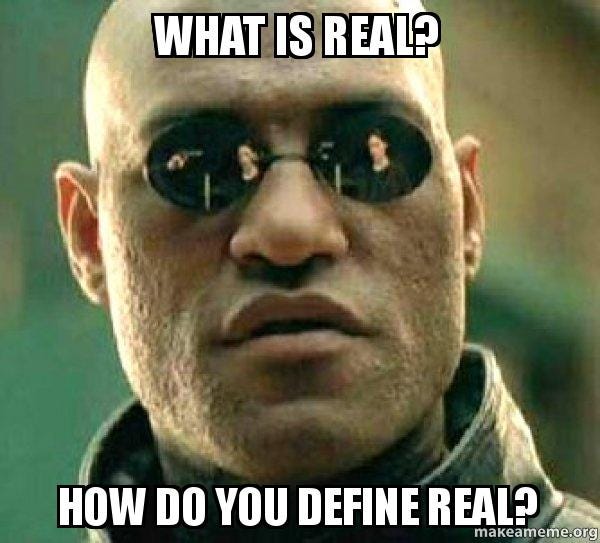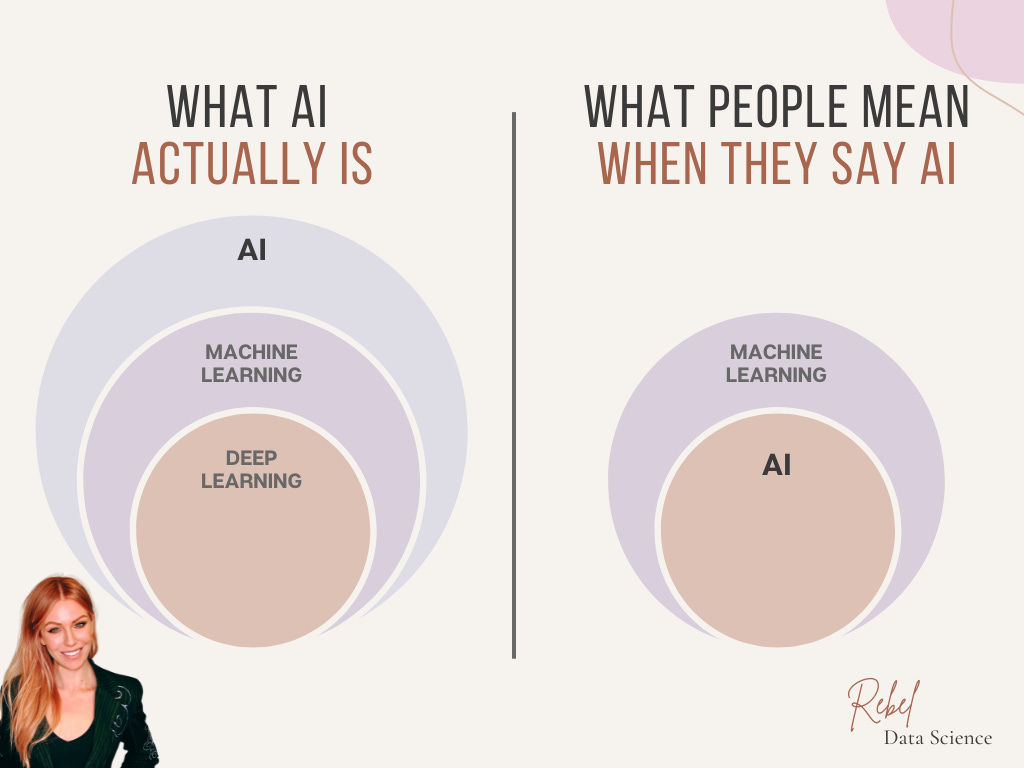When people talk about AI today, they often mean systems that seem to perform tasks requiring human-like creativity or reasoning, like writing or generating art.
However, AI as an umbrella term actually encompasses some not-so-sexy techniques that have been around for ages.
Let’s get into it.
Have you ever said a word so much that it stopped feeling real?
One time I had to write the word “eagle” by hand about a dozen times (don’t ask). By the end of that exercise I wondered if it was even a real word at all. It started to look strange - who puts an “a” after an “e?” Then add in that “g” out of nowhere. Oh no… it’s happening again.
Semantic satiation is actually a known psychological phenomenon where repeated exposure to a word or phrase causes it to temporarily lose its meaning. When you see or hear a word too many times in a short period, your brain stops processing it in the usual way, making it feel strange or meaningless.
It’s like your brain fatigues on its existence altogether and wants to be done with it.
This can happen in various contexts, like:
Reading a word repeatedly until it looks unfamiliar.
Hearing a phrase so often (like corporate jargon) that it feels hollow or annoying.
Seeing a concept or buzzword (like AI) overused in media to the point where it loses impact.
AI is an emotional term
Since we’ve all collectively reached a point of semantic satiation with AI, it’s no wonder the word has taken on a life of its own.
What’s interesting about AI is that instead of having its definition grow to encompass all sorts of things that aren’t really AI, the definition has actually shrunk.
Take a look at this diagram I made in Canva like the talented millennial I am.
On the left, you can see the “correct” technical definition of AI - a broad umbrella term that includes machine learning as a subset and deep learning as an even more specialized field within it. So, AI as an umbrella term includes everything from rule-based systems and expert systems to deep learning and neural networks.
However, the right side captures what most people mean when they say “AI.” AI has become almost synonymous with machine learning, particularly deep learning models like ChatGPT or image generators.
Wait, so this means some sort of “AI” exists that ISN’T machine learning?!
Yes. And I don’t see it discussed very often.
There are indeed AI (if I have to write this word one more time, I swear to God…) techniques that aren’t ML. And most of them have been around since the 50’s!
A classic example is expert systems, which rely on predefined rules rather than learning from data. For instance, rule-based chatbots in customer service follow scripted decision trees to answer common questions without improving over time. Or pathfinding algorithms, like A* used in video game NPC movement, also fall under AI but don’t historically involve machine learning. They just compute the most efficient route based on set heuristics.
So you can think of non-ML AI as systems that don’t need to “learn” to be effective. In fact, if you’ve ever written an if-then statement, then you’ve built a rudimentary AI system. Congratulations.
Speaking of video games…
Games offer a good opportunity to explain the difference in AI vs. ML vs. DL. Here are a few examples of each:
Classical AI: As we learned above, pathfinding algorithms and other rule-based systems are common in video games. For example, a guard NPC might follow a predefined patrol route and respond to the player entering its line of sight with predefined scripts based on a few different player behaviors. This doesn't involve learning from data and instead uses fixed logic.
Machine Learning: Modern games can use machine learning for all sorts of tasks. One simple example is to create basic recommendation systems for in-game stores or daily challenges. Factorization machines, for example, offer an improvement over traditional collaborative filtering, capable of capturing complex interactions between users and items and recommending items that a player is likely to want.
Deep Learning: Modern recommendation systems often use Neural Collaborative Filtering (NCF) to learn user-item interactions dynamically and make better recommendations for all sorts of things, from purchasable skins to challenges. For in-game deep learning, advanced NPCs might use neural networks to learn complex patterns and adapt to different player strategies, resulting in more dynamic and realistic interactions. Generative AI is also used to make dialogue more natural, and insert the player-character’s name into in-game scripts dynamically.
So then, what about GenAI?
Quit asking annoying questions.
Just kidding, but this is also somewhat complicated and I left it off of my chart above purposefully.
Based on our emotional definition above, most people are actually thinking of GenAI when they think of AI.
Where GenAI refers to models that generate new content, like text, images, audio, or video based on learned patterns. Most state-of-the-art GenAI systems today, such as GPT (text generation) and Stable Diffusion (image generation), are built using deep learning techniques, particularly neural networks.
The most common deep learning architectures behind GenAI include:
Transformers (e.g., GPT, LLaMA, PaLM) used in text generation and large language models.
Diffusion Models (e.g., Stable Diffusion, DALL·E 2) used in image and video generation.
GANs (Generative Adversarial Networks, e.g., StyleGAN) used in realistic image and deepfake generation.
Where this gets somewhat complicated is that, while GenAI is currently dominated by deep learning approaches, not all GenAI requires DL. Older procedural generation techniques, such as rule-based text generation or Perlin noise for image generation, can also create new content but don’t rely on deep learning.
However, modern GenAI almost always involves deep learning because of its ability to generate highly complex, human-like outputs.
Wow, I learned so much. Most of it against my will…
You’re welcome.
As always, share if this resonated with you and recommend Good at Business to your friends, family, and enemies.
✌️ Carly
Want More? Here are some other rants.
Upcoming Events
Shift Left Data Conference - Virtual, March 27
Gaming: The AI Incubator That Built the Future - Virtual, March 27
Deep Dish Data w/ Matillion - Denver, April TBA
Databricks AI Summit - San Francisco, June TBA
Big Data London - London, September TBA
More soon…
Thank You! If you want to support this newsletter:
The Data Engineering Professional Certificate is one of the most popular courses on Coursera! Learn practical data engineering with lots of challenging hands-on examples. Enroll here.
Want to book 1:1 time with me? Check out my calendar here.
Want me to speak at your event? Please use the form at the bottom of this page to reach out to me.
If you’d like to sponsor my newsletter, please use the form at the bottom of this page to reach out to me.







